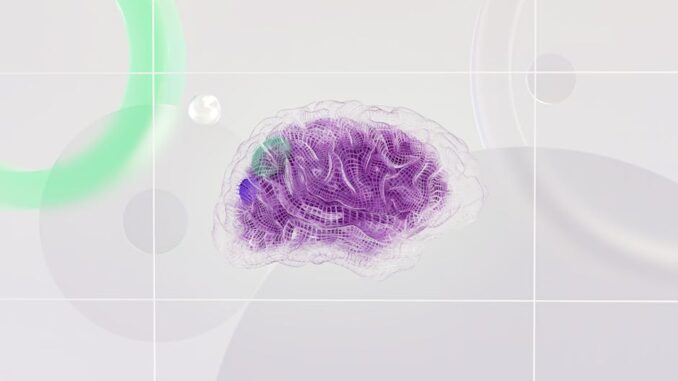
Summary
Scientists use “mini brains” to understand neurodegenerative diseases like Alzheimer’s. This research allows studying the earliest disease stages and screening potential drugs. These advancements offer hope for future treatments and improved geriatric care.
Healthcare data growth can be overwhelming scale effortlessly with TrueNAS by Esdebe.
** Main Story**
Okay, so you’ve probably heard about these ‘mini brains’ that scientists are growing in labs now. I know, it sounds like something out of science fiction, right? But it’s actually a really cool and promising area of neurodegeneration research, especially when we’re talking about diseases like Alzheimer’s and frontotemporal lobar degeneration (FTLD). Basically, they’re these pea-sized, three-dimensional clusters of cells that mimic the structure and function of a real human brain, giving us a way to study these complex conditions in a way we never could before.
Think about it: for years, we’ve relied on animal models, which, while helpful, aren’t always perfect representations of what’s going on in the human brain. These mini brains, also called brain organoids, offer something much closer to the real thing. How? Researchers take skin cells from patients, reprogram them into stem cells, and then kind of ‘coax’ them into developing into brain-like structures. It’s seriously impressive.
Unlocking the Secrets of Brain Degeneration
What’s so revolutionary is that this allows researchers to study the very early stages of diseases, even before symptoms show up. Imagine being able to see what’s going wrong at the cellular level years before someone starts experiencing memory loss or cognitive decline. It’s like having a crystal ball, except it’s made of cells!
Take, for example, the work being done at Ohio State University. Their research has highlighted the critical role of this protein, GRAMD1B, in managing cholesterol and lipid levels within neurons. Apparently, if GRAMD1B goes haywire, it throws off the whole balance and contributes to the buildup of tau, that toxic protein we know is linked to Alzheimer’s and other dementias. This, in turn, could pave the way for new therapies specifically designed to restore GRAMD1B balance and, hopefully, slow down or even prevent the progression of these diseases. I remember a professor once saying, you know, “it’s all about maintaining the balance”, and it appears that holds true even at the cellular level.
And that’s not all; other studies are using mini brains to explore how genetic mutations play a role in autism spectrum disorder. They’ve even identified some potential drug candidates that might be able to reverse some of the associated brain dysfunction. Pretty amazing stuff, right?
The Future Looks Bright (and Tiny)
So, what does all of this mean for the future of geriatric care? Well, I think it’s a game-changer. By giving us a more accurate, human-relevant model of the brain, these organoids are allowing scientists to:
- Study Early Disease Stages: Imagine diagnosing Alzheimer’s a decade before any symptoms appear. That’s the potential here. Early detection is half the battle, isn’t it?
- Screen for Potential Drugs: We can now test drugs directly on human brain tissue, dramatically speeding up the drug development process. No more relying solely on animal studies that may not translate perfectly to humans.
- Personalize Treatments: Picture this: creating a mini brain from a patient’s own cells, testing different treatments on it, and then tailoring a therapy plan specifically for that individual. That’s personalized medicine at its finest!
- Reduce Reliance on Animal Models: While animal models will probably never go away entirely, mini brains offer a more ethical and, in many cases, more accurate alternative. So it’s a win-win.
That said, there’s still a lot of work to be done. And, if I’m honest, it’s going to take years, if not decades, before we see these advancements translated into widespread clinical use. But as researchers continue to refine and improve mini-brain technology, I’m confident that we will see even more groundbreaking discoveries. These advancements offer real hope for new treatments and preventative strategies. As of today, April 20, 2025, this research is ongoing, and we look forward to future advancements in the field, hopefully improving the lives of millions affected by neurodegenerative diseases and enhancing the quality of geriatric care worldwide. Wouldn’t that be something?


The potential for personalized treatments using patient-derived mini-brains is particularly exciting. Could this approach also be used to predict an individual’s response to different lifestyle interventions, like diet or exercise, in preventing or managing neurodegenerative diseases?
That’s a fantastic point! Exploring lifestyle interventions with mini-brains opens up exciting avenues. Imagine tailoring diet or exercise plans based on predicted responses at a cellular level. This could revolutionize preventative care for neurodegenerative diseases. Thanks for sparking this important discussion!
Editor: MedTechNews.Uk
Thank you to our Sponsor Esdebe
The ability to study early disease stages using mini-brains is truly remarkable. Further research into the molecular mechanisms at these stages could identify novel therapeutic targets and preventative strategies for neurodegenerative diseases.